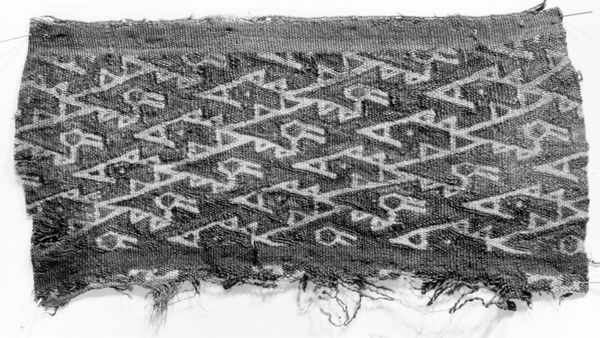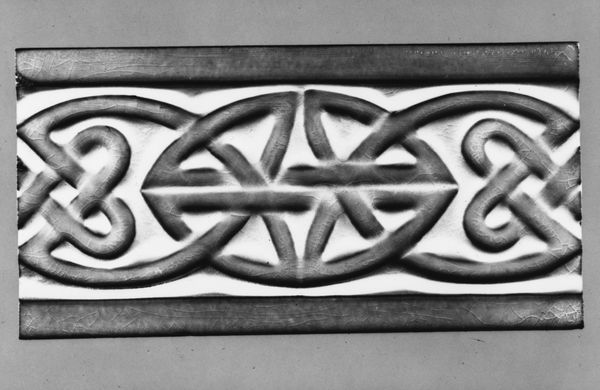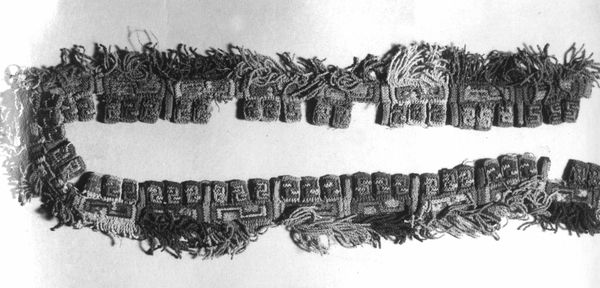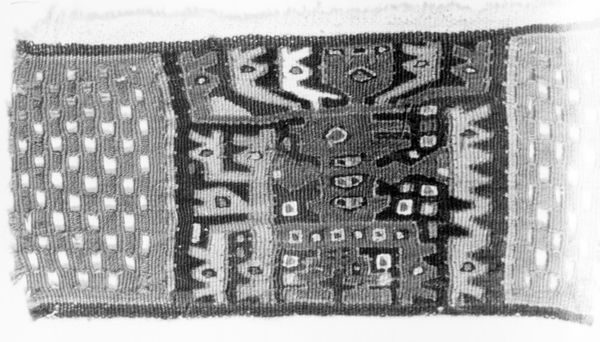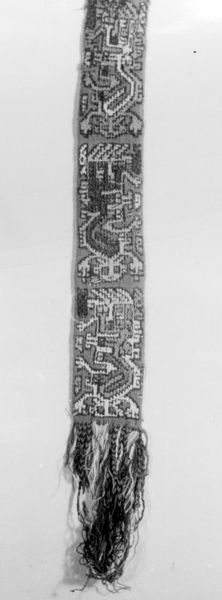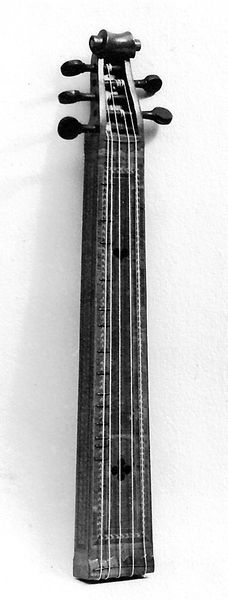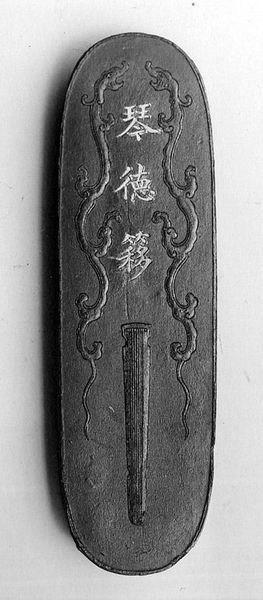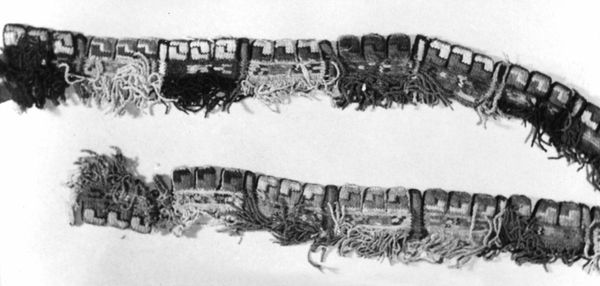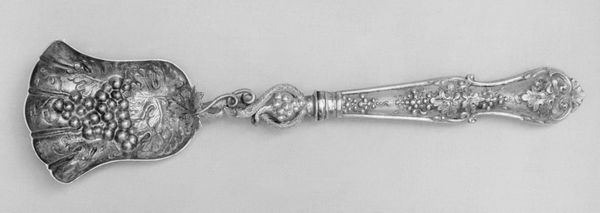
fibre-art, weaving, textile
#
fibre-art
#
weaving
#
textile
#
geometric
#
indigenous-americas
Dimensions: a: 36.8 × 3.8 cm (14 1/2 × 1 1/2 in.) b: 24.1 × 3.8 cm (9 1/2 × 1 1/2 in.)
Copyright: Public Domain
Curator: Here we have "Fragments," a weaving by an artist of the Chancay culture, dating possibly from between 1000 to 1476, and currently held in the collection of the Art Institute of Chicago. Editor: It looks almost like a blueprint, or a plan, yet feels somehow worn and ancient. The pattern, simple geometric shapes in black and white, repeats across the strip of textile in such an even fashion. Curator: Absolutely. Chancay textiles, created by a pre-Inca culture in Peru, often feature repetitive geometric motifs and stylized figures, serving a multitude of social functions: from burial shrouds reflecting the status of the interred to garments communicating communal identity. The fact that it is now identified as a fragment underlines its passage through complex historical events. Editor: To think of the labor, the meticulous handwork that went into each thread is so interesting. Considering that the production and materials carry incredible importance. Fiber art like this existed long before what we call "high art," and challenges this separation since each Chancay weaving embodies skillful artistry intertwined with cultural purpose. Curator: Precisely! Chancay weavings, traded commodities or offerings for the deceased, often played complex public roles. As archaeological relics, they present a lens into past social practices, prompting discussion around the imagery used in indigenous Latin America and how colonialism subsequently impacted this culture. Editor: Seeing those intricate patterns, once woven to communicate status or identity, reduced now to mere "Fragments" gives me a pause. It urges me to ponder not only what's visible, but also what's been lost: stories and skill embedded within each surviving thread. Curator: It indeed is quite humbling, considering that an object can persist through centuries, witnessing the rise and fall of cultures and regimes, now exhibited behind glass as a representation of distant human histories. Editor: Right, seeing the art divorced from its original context reminds us how much significance is woven into an artwork, beyond aesthetics, offering important knowledge about how cultures lived.
Comments
No comments
Be the first to comment and join the conversation on the ultimate creative platform.

